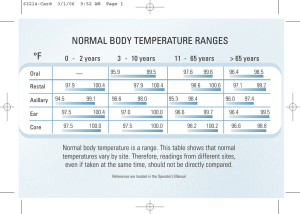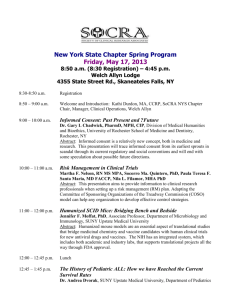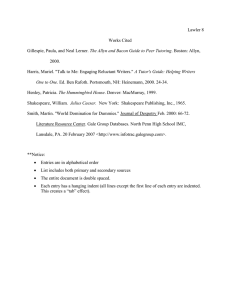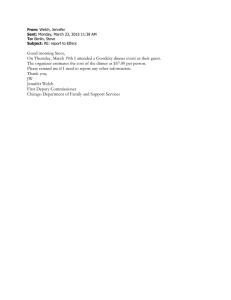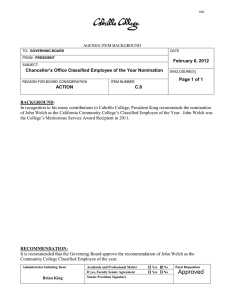Specifications
advertisement
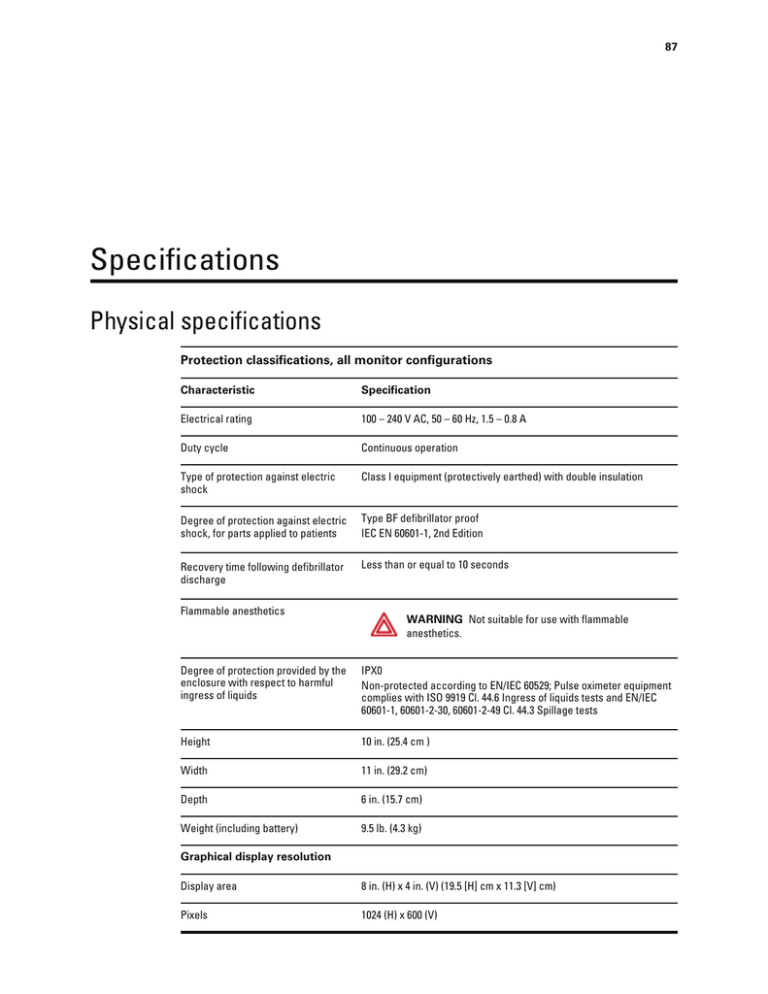
87
Specifications
Physical specifications
Protection classifications, all monitor configurations
Characteristic
Specification
Electrical rating
100 – 240 V AC, 50 – 60 Hz, 1.5 – 0.8 A
Duty cycle
Continuous operation
Type of protection against electric
shock
Class I equipment (protectively earthed) with double insulation
Degree of protection against electric
shock, for parts applied to patients
Type BF defibrillator proof
IEC EN 60601-1, 2nd Edition
Recovery time following defibrillator
discharge
Less than or equal to 10 seconds
Flammable anesthetics
WARNING Not suitable for use with flammable
anesthetics.
Degree of protection provided by the
enclosure with respect to harmful
ingress of liquids
IPX0
Non-protected according to EN/IEC 60529; Pulse oximeter equipment
complies with ISO 9919 Cl. 44.6 Ingress of liquids tests and EN/IEC
60601-1, 60601-2-30, 60601-2-49 Cl. 44.3 Spillage tests
Height
10 in. (25.4 cm )
Width
11 in. (29.2 cm)
Depth
6 in. (15.7 cm)
Weight (including battery)
9.5 lb. (4.3 kg)
Graphical display resolution
Display area
8 in. (H) x 4 in. (V) (19.5 [H] cm x 11.3 [V] cm)
Pixels
1024 (H) x 600 (V)
88 Specifications
Welch Allyn Vital Signs Monitor 6000 Series
Protection classifications, all monitor configurations
Pixel arrangement
RGB (red, green, blue)
Color depth
16 bits per pixel
Speaker volume
Output sound pressure
67 dB at 1.0 meter
Alarm and pulse tones
per IEC 60601-1-8
Pulse frequency (f0)
150 – 1000 Hz
Number of harmonic components in
the range 300 Hz to 4000 Hz
minimum of 4
Effective pulse duration (td)
high priority: 75 –200 ms
medium and low priority: 125 – 250 ms
Rise time (tr)
10 – 20% of td
Fall timea (tf)
tf < ts – tr
Note
The relative sound pressure level of the harmonic components should be within 15 dB above or
below the amplitude at the pulse frequency.
a Prevents overlap of pulses.
Battery specifications
6 cell
9 cell
Rating
11.1 V 3.80Ah (42Wh)
10.8 V 6.75Ah (73Wh)
Composition
Lithium-ion
Lithium-ion
Charge time to 80 percent capacity
2hr 7m
2hr 25m
Charge time to 100 percent capacity
3hr
4hr
Patient exams per charge1
26
47
Age to 70 percent capacity2
300
300
1A patient exam includes NIBP, Temperature, and SpO2 measurements at the rate of one patient every 10
minutes with a 2-minute display time out setting and a new battery.
2After this many full charge and discharge cycles, the battery has aged to where its total capacity has been
reduced to 70 percent of its rating.
Nurse Call connection specifications
Nurse Call
25 V AC or 60 V DC maximum at 1A maximum
Directions for use
Specifications 89
NIBP specifications
Cuff pressure range
Meets or exceeds ANSI/AAMI SP10:2002 standards for cuff pressure
range
Systolic range
Adult: 30 to 260 mmHg (StepBP, SureBP)
Pediatric: 30 to 260 mmHg (StepBP, SureBP)
Neonate: 20 to 120 mmHg (StepBP)
Diastolic range
Adult: 20 to 220 mmHg (StepBP, SureBP)
Pediatric: 20 to 220 mmHg (StepBP, SureBP)
Neonate: 10 to 110 mmHg (StepBP)
Cuff Inflation Target
Adult:160 mmHg (StepBP)
Pediatric: 120 mmHg (StepBP)
Neonate: 90 mmHg (StepBP)
Maximum Target Pressure
Adult: 280 mmHg (StepBP, SureBP)
Pediatric: 280 mmHg (StepBP, SureBP)
Neonate: 130 mmHg (StepBP)
Blood pressure determination time
Typical: 15 seconds
Maximum: 150 seconds
Blood pressure accuracy
Meets or exceeds ANSI.AAMI SP10:2002 standards for noninvasive
blood pressure accuracy (±5 mmHg mean error, 8 mmHg standard
deviation)
Mean Arterial Pressure (MAP) range
The formula used to calculate MAP
yields an approximate value.
Adult: 23 to 230 mmHg (StepBP, SureBP)
Pediatric: 23 to 230 mmHg (StepBP, Sure BP)
Neonate: 13 to 110 mmHg (StepBP)
Pulse rate range (using blood pressure Adult: 30 to 200 bpm (StepBP, SureBP)
determination)
Pediatric: 30 to 200 bpm (StepBP, SureBP)
Neonate: 35 to 220 bpm (StepBP)
Pulse rate accuracy (using blood
pressure determination)
±5.0% (±3 bpm)
Overpressure cutoff
Adult: 300 mmHg ±15 mmHg
Pediatric: 300 mmHg ±15 mmHg
Neonate: 150 mmHg maximum
Temperature specifications
Temperature range
80°F to 110°F (26.7°C to 43.3°C)
Calibration accuracy
Average error
±0.3°F for oral, axillary, and rectal predictive measurements
90 Specifications
Welch Allyn Vital Signs Monitor 6000 Series
Temperature specifications
Standard deviation
Does not exceed 0.5°F for oral, axillary, and rectal modes
SpO2 specifications (refer to sensor manufacturer's directions for use for
additional information)
SpO2 performance measurement range
1 to 100%
Masimo sensor accuracy guide
Accuracy specified when used with Masimo SET pulse
oximetry monitors or with licensed Masimo SET pulse
oximetry modules Masimo sensor accuracy guide
using PC series patient cables, during no motion.
Numbers present ± 1standard deviation. Plus or minus
one standard deviation represents 68% of the
population.
Perfusion
0.02 % to 20 %
Pulse rate
25 to 240 beats per minute (bpm)
No motion: ± 3 digits
Motion: ± 5 digits
Saturation
Note
Saturation accuracy varies by sensor type.
70% to 100%
Adults, Pediatrics (No motion): ± 2 digits
Neonates (No motion): ± 3 digits
Adults, Pediatrics, Neonates (Motion): ± 3 digits
Low Perfusion: 0.02 % to 20 % ± 2 digits
Nellcor sensor accuracy guide
SpO2 measurement accuracy can only be evaluated in
vivo by comparing pulse oximeter readings with SaO2
measurements obtained from simultaneously sampled
arterial blood made using a laboratory CO-oximeter.
The VSM 6000 SpO2 accuracy was validated through
breathe-down-equivalent testing by Covidien using
electronic measurements to prove equivalence to the
Nellcor N600x predicate device. The Nellcor N600x
predicate device was validated by performing humansubject, “breathe-down” clinical trials.
Perfusion
0.03 % to 20 %
Pulse rate
20 to 250 beats per minute (bpm) ± 3 digits
70% to 100%
Saturation accuracy varies by sensor type. Adult, Pediatrics: ± 2 digits
Neonate: ± 3 digits
Saturation
Note
Low Perfusion: 0.02 % to 20 % ± 2 digits
Functional tester
WARNING A functional tester cannot be
used to assess the accuracy of a pulse
oximeter monitor.1
Directions for use
Specifications 91
1 Some models of commercially available bench top functional testers and patient simulators can be used to
verify the proper functionality of Nellcor pulse oximeter sensors, cables and monitors. See the individual
testing device's operator's manual for the procedures specific to the model of tester being used.
While such devices may be useful for verifying that the pulse oximeter sensor, cabling, and monitor are
functional, they are incapable of providing the data required to properly evaluate the accuracy of a system's
SpO2 measurements. Fully evaluating the accuracy of the SpO2 measurements requires, at a minimum,
accommodating the wavelength characteristics of the sensor and reproducing the complex optical interaction
of the sensor and the patient’s tissue. These capabilities are beyond the scope of known bench top testers.
SpO2 measurement accuracy can only be evaluated in vivo by comparing pulse oximeter readings with SaO2
measurements obtained from simultaneously sampled arterial blood made using a laboratory CO-oximeter.
Many functional testers and patient simulators have been designed to interface with the pulse oximeter's
expected calibration curves and may be suitable for use with Nellcor monitors and/or sensors. Not all such
devices, however, are adapted for use with the Nellcor OXIMAX digital calibration system. While this will not
affect use of the simulator for verifying system functionality, displayed SpO2 measurement values may differ
from the setting of the test device. For a properly functioning monitor, this difference will be reproducible over
time and from monitor to monitor within the performance specifications of the test device.
Environmental specifications
Operating temperature
50°F to 104°F (10°C to 40°C)
Storage temperature
-4°F to 122°F (-20°C to 50°C)
Operating altitude
-557 to 10,000 ft. (-170 m to 3,048 m)
Operating humidity
15 to 95% noncondensing
Storage humidity
15% to 95% noncondensing
Monitor radio
The monitor's radio operates on Welch Allyn FlexNet™ or other 802.11 networks.
Wireless network interface
IEEE 802.11 b/g, 802.11a
Frequency
802.11 b/g: 2.402 GHz to 2.4835 GHz
802.11a: 5.125 GHz to 5.875 GHz
Channels
Up to 14 in 802.11b/g, up to 24 in 802.11a; country-dependent
Security/encryption/
authentication
WPA2/AES (either EAP or PSK authentication)
Antenna
Internal multiband PIFA
Wireless data rates
802.11b: 1Mbps or higher during vitals transmission only
802.11a/g: 6Mbps or higher during vitals transmission only
(approximately 2 seconds per reading)
Agency approvals
US: FCC Part 15, Class B; C/UL; CE; 47 CFR Part 2.1093, 15.207, 15.209,
15.247, 15.407; FCC OET Bulletin 65C
92 Specifications
Welch Allyn Vital Signs Monitor 6000 Series
Europe: CE; EN 50371; EN/ETSI 300 328 V1.7.1, 301 489-1 V1.6.1, 301
489-17 V1.2.1, 301 893 V1.4.1
Canada: RSS-210; RSS-GEN; RSS-102
Hong Kong: HKTA 1039
Protocols
UDP, DHCP, TCP/IP
Data transfer protocols
UDP/TCP/IP
Modulation
OFDM (802.11a/g), DSSS/CCK (802.11b)
Output power
40mW typical, country-dependent
Ancillary IEEE standards
802.11e, 802.11h, 802.11i, 802.11X
Channel restrictions in the 5-GHz band are determined by country.
Marking by the symbol ( ! ) indicates that usage restrictions apply. To ensure compliance with local
regulations, be sure the correct country in which the access point is installed is selected. This
product can be used with the following restriction(s):
France - Outdoor use is limited to 10 mW EIRP within the band 2454 to 2483.5 MHz.
Note
Effective Isotropic Radiated Power (EIRP).
Note
Some countries restrict the use of 5-GHz bands. The 802.11a radio in the monitor uses only
the channels indicated by the access point with which the radio associates. The hospital
IT department must configure access points to operate with approved domains.
Configuration options
The monitor is available in multiple configurations.
Model
Description
6300
Basic. Includes USB connectivity. Ethernet connectivity is optional.
6400
Standard. Includes nurse call, Ethernet, and USB connectivity. The radio is optional.
6500
Wireless. Includes all Standard features plus an internal 802.11 a/b/g radio.
Patents
The Welch Allyn VSM 6000 series monitor is covered under the following patents:
6,000,846; 6,036,361; 6,036,718; 6,095,983; 6,544,173; 6,544,174; 6,578,428; 6,616,606; 6,971,790;
6,827,488; 6,988,989; 7,021,824; 7,226,419; 7,255,475; 7,390,299; 7,429,245; 7,439,856; 7,515,043;
7,515,044; D480,977; D568,478; D575,871; and other patents pending.
93
Standards and compliance
General compliance and standards
The monitor complies with the following standards:
21 CFR Subchapter H – Medical Devices – US Food and Drug Administration
2002 No. 236 – Australian Therapeutic Goods Act
93/42/EEC – European Economic Community Medical Devices Directive
2007/47/EC – European Economic Community Medical Devices Directive 2007 Amendment
94/62/EC – European Economic Community Packaging Directive
2002/96/EC – European Economic Community Waste Electrical and Electronic Equipment Directive
2006/66/EC – European Economic Community Batteries and Accumulators Directive
SOR/98-282 – Canadian Medical Devices Regulation
IATA DGR – International Air Transport Association Dangerous Goods Regulation
United Nations ST/SG/AC.10/11 – Manual of Tests and Criteria, Part III, Sub-Section 38.3
ANSI/AAMI SP10
AS/NZS 3200.1.01
ASTM D 4332, E 1104
CAN/CSA C22.2 NO.601.11 CAN/CSA-C22.2 NO.60601-1-2, CSA Z9919
EN 1060-1, 1060-3, 1060-42
EN/IEC 60601-1, 60601-1-2, 60601-1-4, 60601-1-6, 60601-1-8, 60601-2-30, 60601-2-49, 62304
EN/ISO 9919, 13485, 14971
ISTA 2A
UL 60601-11
Directive 2002/96/EC-WEEE:
Disposal of noncontaminated electrical and electronic equipment
This product must be disposed of according to local laws and regulations. Do not dispose of this
product as unsorted municipal waste. Prepare this product for reuse or separate collection as
specified by Directive 2002/96/EC of the European Parliament and the Council of the European
Union on Waste Electronic and Electrical Equipment (WEEE). If this product is contaminated, this
directive does not apply.
1 Standard is essentially the IEC 60601-1 General standard plus the listed country's National Deviations.
2 Non-Invasive Sphygmomanometers – Part 1: General Requirements, Part 3. Supplementary Requirements for
Electro-Mechanical Blood Pressure Measuring Systems, Part 4: Test Procedures to Determine the Overall System
Accuracy of Automated Non-Invasive Sphygmomanometers.
94
Standards and compliance
Welch Allyn Vital Signs Monitor 6000 Series
For more specific disposal or compliance information, see www.welchallyn.com/weee, or contact
Welch Allyn Customer Service at +44 207 365 6780.
General radio compliance
The 802.11a Wireless PC Card must be used in strict accordance with the manufacturer’s
instructions as described in the user documentation that comes with the product.
This device complies with Part 15 of the FCC rules and with the rules of the Canadian ICES-003 as
described below.
Federal Communications Commission (FCC)
This device complies with part 15 of the FCC Rules. Operation is subject to the following two
conditions:
•
This device may not cause harmful interference.
•
This device must accept any interference received, including interference that may cause
undesired operation.
This equipment has been tested and found to comply with the limits for a Class B digital device,
pursuant to Part 15 of FCC Rules. These limits are designed to provide reasonable protection
against harmful interference in a residential installation. This equipment generates, uses, and can
radiate radio frequency energy. If not installed and used in accordance with the instructions, it
may cause harmful interference to radio communications. However, there is no guarantee that
interference will not occur in a particular installation. If this equipment does cause harmful
interference to radio or television reception, which can be determined by turning the equipment off
and on, the user is encouraged to try and correct the interference by one or more of the following
measures:
•
Reorient or relocate the receiving antenna
•
Increase the distance between the equipment and the receiver
•
Connect the equipment to an outlet on a circuit different from that to which the receiver is
connected
•
Consult the dealer or an experienced radio/TV technician for help
The user may find the following booklet prepared by the Federal Communications Commission
helpful:
The Interference Handbook
This booklet is available from the U.S. Government Printing Office, Washington, D.C. 20402. Stock
No. 004-000-0034504.
Welch Allyn is not responsible for any radio or television interference caused by unauthorized
modification of the devices included with this Welch Allyn product, or the substitution or
attachment of connecting cables and equipment other than specified by Welch Allyn.
The correction of interference caused by such unauthorized modification, substitution, or
attachment will be the responsibility of the user.
Industry Canada (IC) emissions
This device complies with RSS 210 of Industry Canada.
Directions for use
Standards and compliance 95
Operation is subject to the following two conditions: (1) this device may not cause interference,
and (2) this device must accept any interference, including interference that may cause undesired
operation of this device.
L’utilisation de ce dispositif est autorisée seulement aux conditions suivantes: (1) il ne doit pas
produire de brouillage et (2) l’ utilisateur du dispositif doit étre prêt à accepter tout brouillage
radioélectrique reçu, même si ce brouillage est susceptible de compromettre le fonctionnement du
dispositif.
This Class B digital apparatus complies with Canadian ICES-003.
Cet appareil numérique de la classe B est conform à la norme NMB-003 du Canada.
European Union
Czech
Welch Allyn tímto prohlašuje, ze tento RLAN device je ve shod se základními požadavky a
dalšími p!íslušnými ustanoveními sm rnice 1999/5/ES.
Danish
Undertegnede Welch Allyn erklærer herved, at følgende udstyr RLAN device overholder de
væsentlige krav og øvrige relevante krav i direktiv 1999/5/EF
Dutch
Bij deze verklaart Welch Allyn dat deze RLAN device voldoet aan de essentiële eisen en
aan de overige relevante bepalingen van Richtlijn 1999/5/EC.
English
Hereby, Welch Allyn, declares that this RLAN device is in compliance with the essential
requirements and other relevant provisions of Directive 1999/5/EC.
Estonian
Käesolevaga kinnitab Welch Allyn seadme RLAN device vastavust direktiivi 1999/5/EÜ
põhinõuetele ja nimetatud direktiivist tulenevatele teistele asjakohastele sätetele.
Finnish
Welch Allyn vakuuttaa täten että RLAN device tyyppinen laite on direktiivin 1999/5/EY
oleellisten vaatimusten ja sitä koskevien direktiivin muiden ehtojen mukainen.
French
Par la présente, Welch Allyn déclare que ce RLAN device est conforme aux exigences
essentielles et aux autres dispositions de la directive 1999/5/CE qui lui sont applicables
German
Hiermit erklärt Welch Allyn die Übereinstimmung des Gerätes RLAN device mit den
grundlegenden Anforderungen und den anderen relevanten Festlegungen der Richtlinie
1999/5/EG. (Wien)
Greek
"# $%& '()*+,( Welch Allyn -%./&#0 *$0 RLAN device ,+""*)1/&#$(0
')*, $0, *+,0/-#0, ('(0$%,#0, 2(0 $0, .*0'#, ,3#$02#, -0($(4#0, $%,
*-%50(, 1999/5/#2
Hungarian
Alulírott, Welch Allyn nyilatkozom, hogy a RLAN device megfelel a vonatkozó alapvetõ
követelményeknek és az 1999/5/EC irányelv egyéb elõírásainak.
Italian
Con la presente Welch Allyn dichiara che questo RLAN device è conforme ai requisiti
essenziali ed alle altre disposizioni pertinenti stabilite dalla direttiva 1999/5/CE.
Latvian
Ar šo Welch Allyn deklar6, ka RLAN device atbilst Direkt7vas 1999/5/EK b8tiskaj9m
pras7b9m un citiem ar to saist7tajiem noteikumiem.
Lithuanian
Šiuo Welch Allyn deklaruoja, kad šis RLAN device atitinka esminius reikalavimus ir kitas
1999/5/EB Direktyvos nuostatas.
Malti
Hawnhekk, Welch Allyn, jiddikjara li dan RLAN device jikkonforma mal-htigijiet essenzjali u
ma provvedimenti ohrajn relevanti li hemm fid-Dirrettiva 1999/5/EC
96 Standards and compliance
Welch Allyn Vital Signs Monitor 6000 Series
Portuguese
Welch Allyn declara que este RLAN device está conforme com os requisitos essenciais e
outras disposições da Directiva 1999/5/CE.
Slovak
Welch Allyn týmto vyhlasuje, ze RLAN device sp:;a základné požiadavky a všetky príslušné
ustanovenia Smernice 1999/5/ES.
Slovene
Šiuo Welch Allyn deklaruoja, kad šis RLAN device atitinka esminius reikalavimus ir kitas
1999/5/EB Direktyvos nuostatas.
Spanish
Por medio de la presente Welch Allyn declara que el RLAN device cumple con los
requisitos esenciales y cualesquiera otras disposiciones aplicables o exigibles de la
Directiva 1999/5/CE
Swedish
Härmed intygar Welch Allyn att denna RLAN device står I överensstämmelse med de
väsentliga egenskapskrav och övriga relevanta bestämmelser som framgår av direktiv
1999/5/EG.
97
Guidance and manufacturer's declaration
EMC compliance
Special precautions concerning electromagnetic compatibility (EMC) must be taken for all medical
electrical equipment. This device complies with IEC EN 60601-1-2:2007.
•
All medical electrical equipment must be installed and put into service in accordance with the
EMC information provided in this document and the VSM 6000 Directions For Use.
•
Portable and mobile RF communications equipment can affect the behavior of medical
electrical equipment.
The VSM 6000 monitor complies with all applicable and required standards for electromagnetic
interference.
•
It does not normally affect nearby equipment and devices.
•
It is not normally affected by nearby equipment and devices.
•
It is not safe to operate the monitor in the presence of high-frequency surgical equipment.
•
However, it is good practice to avoid using the monitor in extremely close proximity to other
equipment.
Emissions and immunity information
Electromagnetic emissions
The monitor is intended for use in the electromagnetic environment specified below. The customer or user of
the monitor should assure that it is used in such an environment.
Emissions test
Compliance
Electromagnetic environment - guidance
RF emissions
CISPR 11
Group 1
The monitor uses RF energy only for its internal function.
Therefore, its RF emissions are very low and are not likely to
cause any interference in nearby electronic equipment.
RF emissions
CISPR 11
Class A
The monitor is suitable for use in all establishments other than
domestic establishments and those directly connected to the
public low-voltage power supply network that supplies buildings
used for domestic purposes, provided the following warning is
heeded:
Harmonic emissions Class A
IEC 61000-3-2
98 Guidance and manufacturer's declaration
Welch Allyn Vital Signs Monitor 6000 Series
Electromagnetic emissions
Voltage fluctuations/ Complies
flicker emissions
IEC 61000-3-3
WARNING This equipment/system is intended for
use by healthcare professionals only. This equipment/
system may cause radio interference or may disrupt
the operation of nearby equipment a. It may be
necessary to take mitigation measures, such as reorienting or relocating the monitor or shielding the
location.
a The monitor contains a 5-GHz orthogonal frequency-division multiplexing transmitter or a 2.4-GHz frequency
hopping spread-spectrum transmitter for the purpose of wireless communication. The radio is operated
according to the requirements of various agencies, including FCC 47 CFR 15.247 and R&TTE Directive (1995/5/
EC). The transmitter is excluded from the EMC requirements of 60601-1-2:2007, but should be considered
when addressing possible interference issues between this and other devices.
Electromagnetic immunity
The monitor is intended for use in the electromagnetic environment specified below. The customer or the
user of the monitor should assure that it is used in such an environment.
Immunity test
IEC 60601 test
level
Compliance level Electromagnetic environment guidance
Electrostatic
discharge (ESD)
IEC 61000-4-2
±6 kV contact
± 8 kV air
± 6 kV contact
± 8 kV air
Floors should be wood, concrete or
ceramic tile. If floors are covered with
synthetic material, the relative humidity
should be at least 30%.
Electrical fast
transient/burst
IEC 61000-4-4
±2 kV for power
supply lines
±1 kV for input/
output lines
±2 kV for power
supply lines
±1 kV for input/
output lines
Mains power quality should be that of a
typical commercial or hospital
environment.
Surge
IEC 61000-4-5
± 1 kV differential
mode
± 2 kV common
mode
± 1 kV differential
mode
± 2 kV common
mode
Mains power quality should be that of a
typical commercial or hospital
environment.
Voltage dips, short
interruptions and
voltage variations on
power supply input
lines
IEC 61000-4-11
>95% dip in 0.5 cycle >95% dip in 0.5 cycle Mains power quality should be that of a
typical commercial or hospital
60% dip in 5 cycles 60% dip in 5 cycles environment. If the user of the monitor
30% dip for 25 cycles 30% dip for 25 cycles requires continued operation during power
mains interruptions, it is recommended
>95% dip in 5
>95% dip in 5
that the monitor be powered from an
seconds
seconds
uninterruptible power supply or a battery.
Electromagnetic immunity
The monitor is intended for use in the electromagnetic environment specified below. The customer or the
user of the monitor should assure that it is used in such an environment.
Immunity test
IEC 60601 test
level
Compliance level Electromagnetic environment guidance
Directions for use
Guidance and manufacturer's declaration 99
Electromagnetic immunity
Portable and mobile RF communications
equipment should be used no closer to any
part of the monitor, including cables, than
the recommended separation distance
calculated from the equation applicable to
the frequency of the transmitter.
Recommended separation distance
Conducted RF
IEC 61000-4-6
3 Vrms
150 kHz to 80 MHz
3 Vrms
d= (1.17)
Radiated RF
IEC 61000-4-3
3 V/m 80 MHz to 1
GHz
3 V/m
d= (1.17)
80 to 800 MHz
d= (2.33)
800 MHz to 2,5 GHz
whereP is the maximum output power
rating of the transmitter in watts (W) andd
is the recommended separation distance
in meters (m). Field strengths from fixed RF
transmitters, as determined by an
electromagnetic site surveya, should be
less than the compliance level in each
frequency rangeb. Interference may occur
in the vicinity of equipment marked with
the following symbol:
Note1: At 80 MHz and 800 MHz, the higher frequency range applies.
Note 2: These guidelines may not apply in all situations. Electromagnetic propagation is affected by
absorption and reflection from structures, objects, and people.
aField strengths from fixed transmitters, such as base stations for radio (cellular/cordless) telephones and
land mobile radios, amateur radio, AM and FM radio broadcast, and TV broadcast cannot be predicted
theoretically with accuracy. To assess the electromagnetic environment due to fixed RF transmitters, an
electromagnetic site survey should be considered. If the measured field strength in the location in which the
monitor is used exceeds the applicable RF compliance level above, the monitor should be observed to verify
normal operation. If abnormal performance is observed, additional measures may be necessary, such as
reorienting or relocating the monitor.
bOver the frequency range 150 kHz to 80 MHz, field strengths should be less than 3 V/m.
Recommended separation distances between portable and mobile RF
communications equipment and the monitor
The monitor is intended for use in an electromagnetic environment in which radiated RF disturbances are
controlled. The customer or user of the monitor can help prevent electromagnetic interference by
maintaining a minimum distance between portable and mobile RF communications equipment (transmitters)
and the monitor as recommended below, according to the maximum output power of the communications
equipment.
Separation distance according to frequency of transmitter (m)
100
Guidance and manufacturer's declaration
Welch Allyn Vital Signs Monitor 6000 Series
Recommended separation distances between portable and mobile RF
communications equipment and the monitor
Rated max.
output power of
transmitter (W)
150 kHz to 80
MHz
80 MHz to 800
MHz
800 MHz to 2.5 GHz
d= (1.17)
d= (1.17)
0.01
0.11667
0.11667
0.23333
0.1
0.36894
0.36894
0.73785
1
1.1667
1.1667
2.3333
10
3.6894
3.6894
7.3785
100
11.667
11.667
23.3333
d= (2.23)
For transmitters rated at a maximum output power not listed above, the recommended separation distanced
in meters (m) can be estimated using the equation applicable to the frequency of the transmitter, where P is
the maximum output power rating of the transmitter in watts (W) according to the transmitter manufacturer.
Note 1: At 80 MHz and 800 MHz, the separation distance for the higher frequency range applies.
Note 2: These guidelines may not apply in all situations. Electromagnetic propagation is affected by
absorption and reflection from structures, objects, and people.
